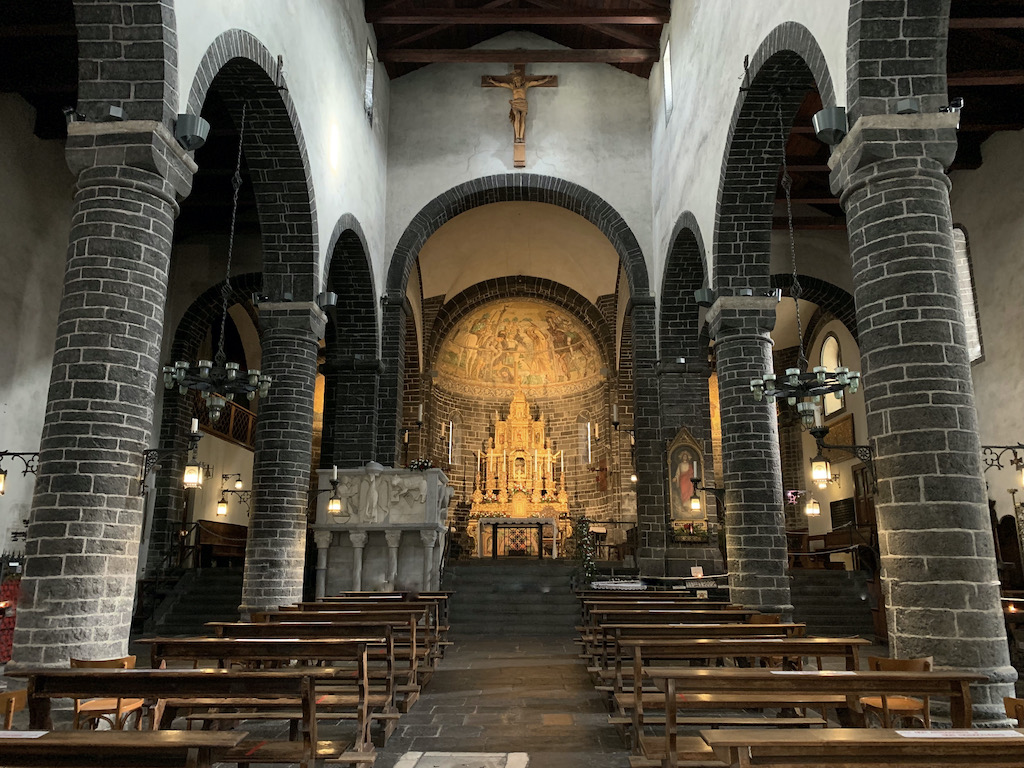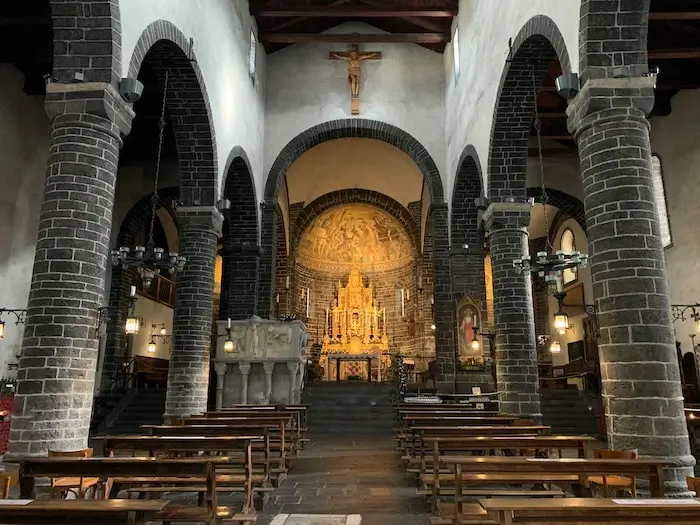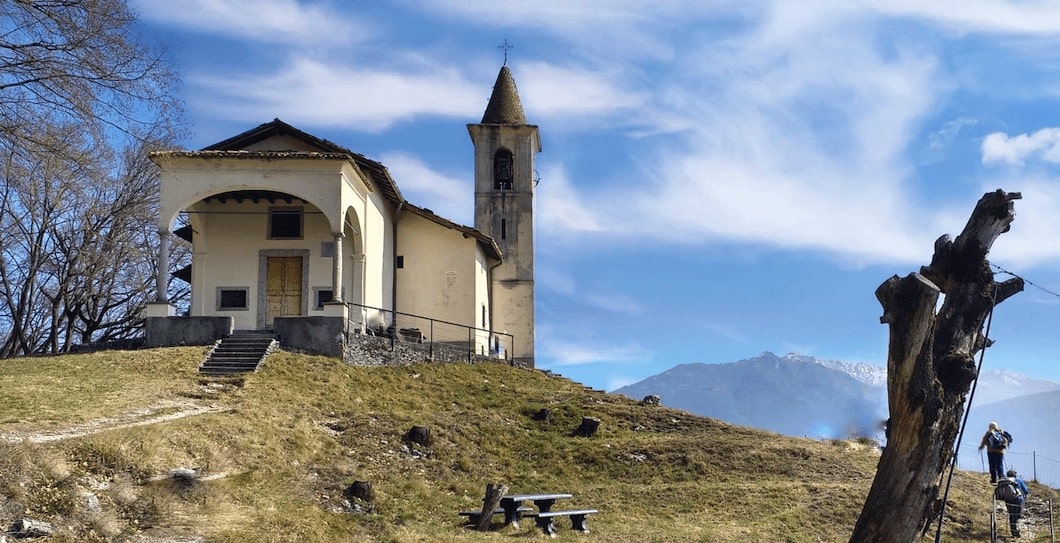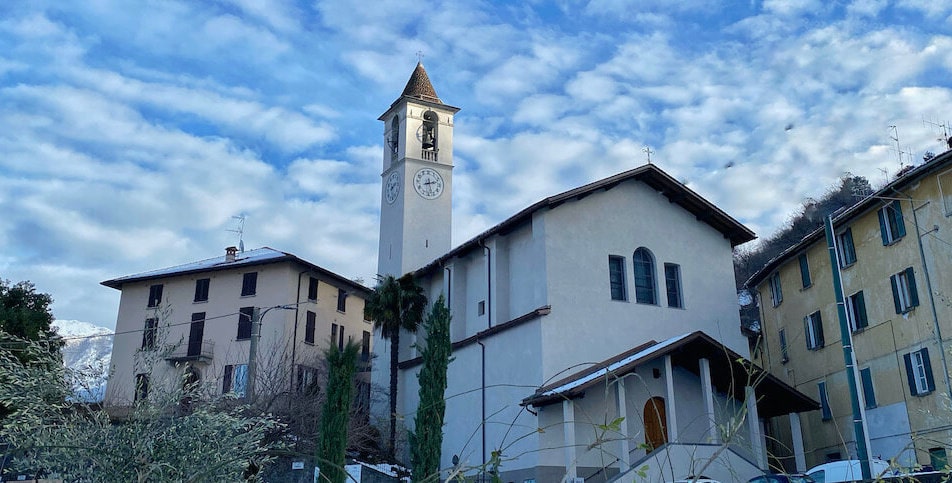The basilica was built between the end of the 11th century and the beginning of the 12th century
It has a plan with three naves with the bell tower placed on the left of the façade.
Of the original building, the three apses remain on the outside, decorated with double-edged arches; inside the four capitals and the symbols of the evangelists of the atrium. The bell tower was obtained by overturning and altering a defense tower of the north wall in the 17th century, which reached about the height of the church roof. With the eighteenth-century transformations, the bell tower took on its present appearance. It was also plastered over, like the rest of the church, until it was restored in 1990.
The interior is decorated with artworks from different historical periods.
Examples of this are the two fifteenth-century panels, one from the Umbrian school and one from the Lombard school, the various Romanesque sculptures and paintings from the end of the sixteenth and seventeenth centuries, including the Deposition of Jesus in the sepulcher and the Madonna delle Grazie, the first attributed to Perugino and the second, from the 16th century, attributed to Foppa.
In the three apses, starting from the left, there is the chapel of Sant’Orsola, with a mosaic by the Castemari company of Venice, dating back to the early twentieth century; the altarpiece in gilded wood, above the tabernacle, by the Bellagio sculptor Domenico Pini; the chapel of Sant’Antonio, with the mosaic, also the work of the Castemari firm of Venice, which replaced a fresco ruined by humidity. The altar, dating back to 1985, was made by the Sampietro company, with slabs of Musso marble. The ambo is the result of the reconstruction led by the architect Perrone, during the restoration of the ancient church. The symbols of the evangelists, found on the wall of the bell tower, were also part of the ancient ambo.
There is also a dead Christ, in seventeenth-century Spanish, which according to tradition belonged to a Spanish settlement in Pian di Spagna, on the top of Lake Como, swept away by a flood from the Adda river and carried into the lake; he was found by Bellagini fishermen and placed in veneration in the church. It goes in procession every Good Friday.
Even the baptistery is the result of the interventions carried out during the restoration works of the church. The arrangement of the whole, as it appears today, dates back to 1986. The mosaic of the Venetian school depicts the Baptism of Christ from the canvas by Bergognone, which is located in the church of Melegnano. The support of the swimming pool is the work of the sculptor Daverio of Bergamo.
Bells
On the bell tower there is a valuable concert of 5 bells made entirely in 1849 by the famous Valtellinese foundry “Pruneri” which was based in Grosio (So).
The concert composed of 5 diatonic bells larger than D3 is perfectly in tune.
The bells are installed according to the typical “Ambrosiano” sound diffusion as per the tradition of the area.
Sourche: Wikipedia
Click here to check Holy Mass celebration times in Bellagio





